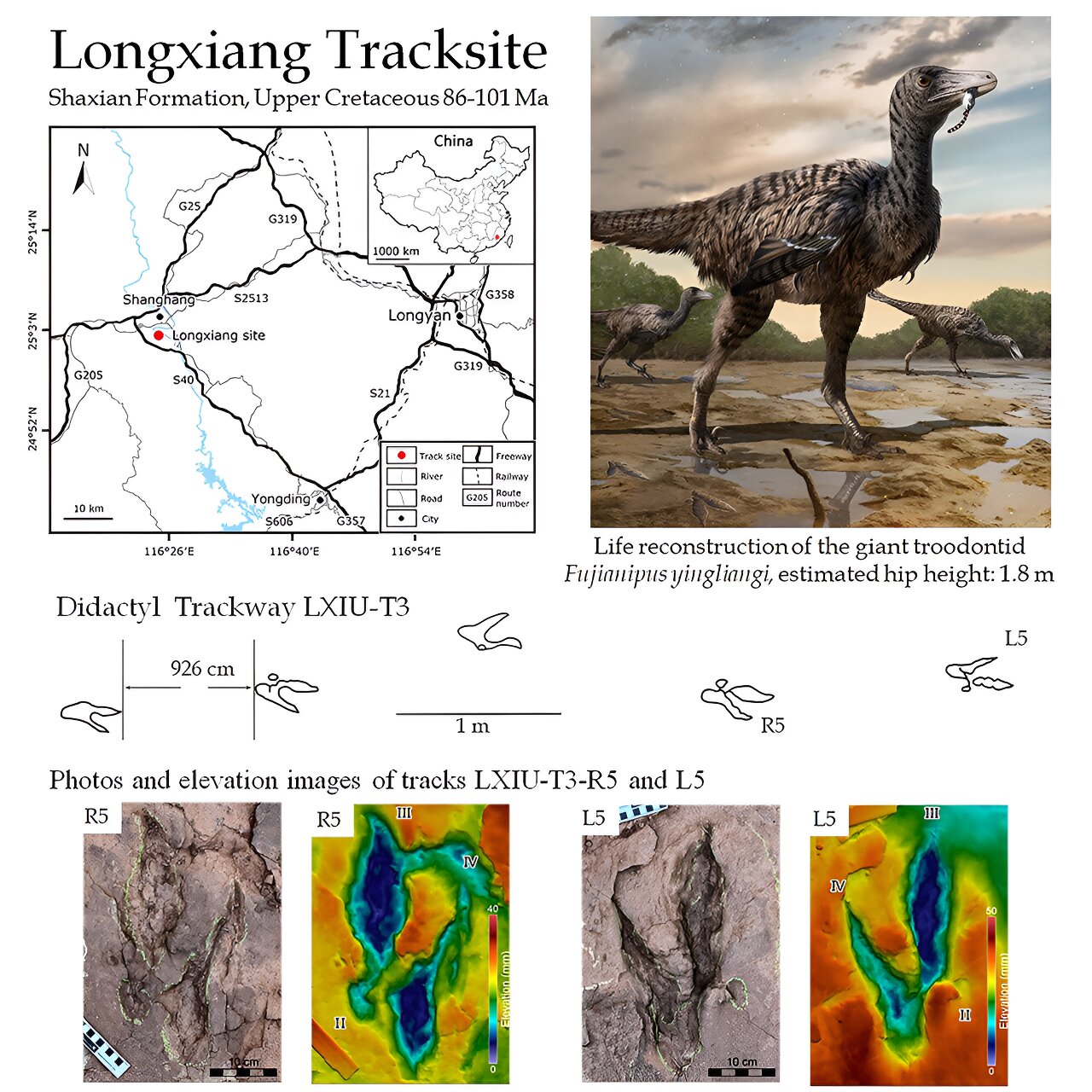× close
Scientists have discovered the tracks of a 5 meter-long raptor dinosaur, challenging what was previously known about the species’ size range.
The tracks were found in Fujian Province in south-eastern China by an international team of researchers with paleontologist Dr. Anthony Romilio from The University of Queensland’s Dinosaur Lab providing detailed analysis.
“When people think of raptor dinosaurs, they most likely think of those in the Jurassic Park movies—human-sized, muscly, aggressive hunters,” Dr. Romilio said.
“But these tracks were left by a much slimmer and brainier group in the Velociraptor family known as Troodontids, which emerged in the late Jurassic period around 95 million years ago.
“This raptor was around 5-meters-long with 1.8 meter-long legs, far exceeding the size of the raptors depicted in Jurassic Park.
“Imagine something like that coming at you at full speed!”
The tracks were discovered in 2020 by a research team led by Associate Professor Lida Xing from China University of Geosciences, which set out to explore reported dinosaur footprints in the Fujian province.
The footprints of a variety of dinosaurs were uncovered, including the two-toed tracks characteristic of raptor dinosaurs.
Dr. Romilio said the tracks were compared with other known two-toed dinosaur tracks from across Asia, North and South America and Europe.
“We found this track type is distinct in shape, making it quite unique,” he said.
“The concept of large Troodontids has only recently emerged in the paleontological community.
“Bones discovered in Alaska hint at a trend toward gigantism near the ancient Arctic circle, an area with potentially less species competition due to extended periods of winter darkness.
“But our findings suggest these raptor giants roamed much further south and were more widely dispersed.
“Interestingly, some of our research team has also worked on the world’s tiniest dinosaur footprints—raptor tracks in South Korea that are just one centimeter long.
“It just goes to show the incredible size range among raptor dinosaurs, highlighting their adaptability and ecological diversity.”
The track type has been named Fujianipu in homage to the province where the tracks were found.
The paper is published in the journal iScience.
More information:
Lida Xing et al, Deinonychosaur trackways in southeastern China record a possible giant troodontid, iScience (2024). DOI: 10.1016/j.isci.2024.109598

Dr. Thomas Hughes is a UK-based scientist and science communicator who makes complex topics accessible to readers. His articles explore breakthroughs in various scientific disciplines, from space exploration to cutting-edge research.








